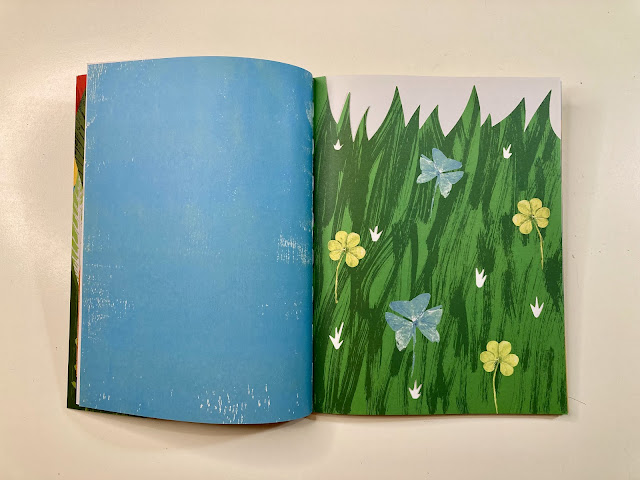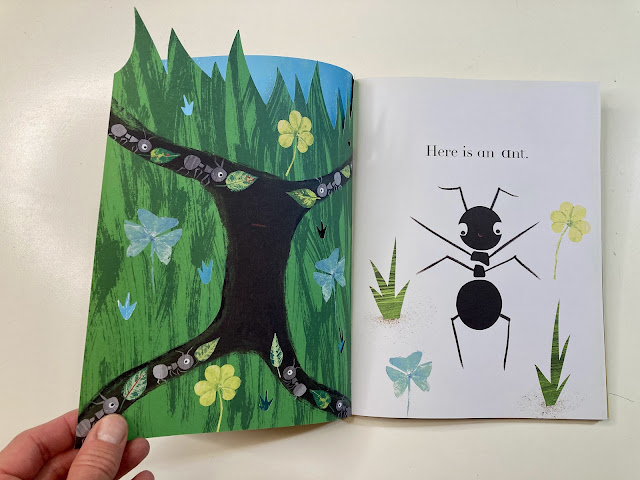The inclusion of flaps in picture books can undoubtably add an exciting extra level of interest for the reader. After all, who can refuse the temptation of lifting a flap in a picture book? Not me!
The flap is not only about encouraging reader interaction, but it can also add another level to the storyline by revealing text as well as hidden illustrations and therefore, moving the story forward through the reveal.
The flap acts as a mini page turn and has many options for the writer and illustrator to consider as a way of pushing the story forward. For example, when opened flat, the flap can alter the image it covers in a way that changes the action and in a very simple way, suggest the beginnings of movement, encouraging the reader to flick the flap back and forth quickly to animate the changes.
 |
| Exploring using flaps to change expressions -Work in progress. Garry Parsons |
Making the flaps work brings its own challenges for the illustrator and designer and poses some interesting questions about the purpose the flap is there to achieve? Are they necessary for enhancing or pushing the storyline forward, does the reveal change with the text or is the inclusion of flaps simply there as a sales lure from the publisher?
Technically, flaps can appear almost anywhere on the page so long as they are clear of the gutter (the centre fold) and can be relatively any size or shape within the book’s dimensions. The largest flap is the gatefold, a page that has been made double the size and folded back on itself on one side which when opened extends the spread out to the side, top or below. This can be single or double to extend the spread from either side.
The possibilities are many but what is certain is that the reveal needs to be satisfying for the reader. As a participant in the story, we want the flaps to be irresistible but more importantly, we want the reward of being delighted by revealing the secret of what’s hiding underneath.
Having completed a few picture books with flaps myself and currently working on a another, I've had the opportunity to explore flaps in picture books again recently and come up with a few enticing titles to share, starting with books with small flaps and ending with, well…all will be revealed!
Nuddy Ned's Christmas. Kes Grey.
Kes Gray's Nuddy Ned's Christmas uses small irregular shaped flaps to reveal and conceal at the same time. The story follows a young boy who, like many young children, enjoys running around the house naked, except here, oblivious to his lack of clothing, Ned leaves the warm confines of home to explore the town in search of Santa, but completely starkers. However, each flap reveals something that also conceals Ned's modesty, turning the joke back on the reader.
Somehow, Ned's streak through town convinces Santa that being in the 'altogether' is something he might want to try. Our last flap to open is covering Santa's seemingly bare bottom. Lift the flap if you dare!
Meerkat Mail. Emily Gravett.
Leaving in search of some respite from a chaotic family life, Sunny leaves the desert but keeps in touch with the relatives via postcards and letters. In Meerkat Mail, Emily Gravett uses flaps as Sunny's communication home.
Not only do we get to read Sunny's correspondence, but the reveal also extends the action through the illustration underneath. On this spread, Sunny returns home to the closeness of the family that he's been missing.
Animalalphabet uses a clever combination of peep-hole pages and fold-out flaps to reveal and then hide animals.
Stuck in the Mud. Jane Clarke, illustrated by Garry Parsons.
The tension for the farm animals in Jane Clarke's Stuck in the Mud build's and builds over each page turn with the inclusion of a new animal joining the throng as the story progresses. More and more animals arrive to rescue the helpless chick who is stranded in the mud. The single gatefold at the end reveals the story's punchline, that the not-so helpless little chick has been deceiving everyone all along, including the reader.
In Jim, A Cautionary Tale by Hilaire Belloc and illustrated by Mini Grey, the story includes an array of flaps, folded reveals and clever pop-up elements but begins with a potted outline of Jim's life.
Incorporated into the double gatefold are extra flaps which reveal the next lines of the text
Flora and the Peacocks by Molly Idle
Flora and the Peacocks by Molly Idle is a wordless picture book, adorned with flaps which increase in size and frequency.
Flora dances with a pair of peacocks who echo the movements of her fan. The reader is invited to lift the flaps of both Flora's fan and the flaps of the peacock's tails, encouraging a unique choreography.
In the story, Flora (and the reader) dance with the birds until the fan gets broken. Disheartened, poor Flora is left annoyed and upset, but the peacocks have a a magical way of cheering her up.
More akin to a pop-up element than a flap and increasing the book size twice over, the reveal is too astonishing not to include.
































